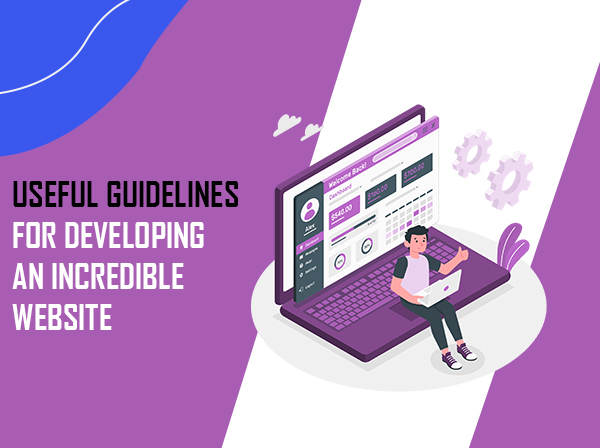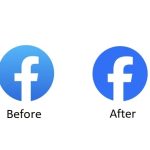There are a number of styles and paths that your website may go when it relates to custom website development. It may range from sophisticated to minimalistic, from lively and vivid to sleek and futuristic.
While your ultimate look and feel should reflect your personal style, field of business, and brand identification, there are a few basic principles that apply whether you’re building a new site or modifying an existing one.
Excellent web design contributes to your customer experience and performance while being simple to grasp at first glance. We’ve compiled a list of easy website design suggestions to assist you in making your site more successful and compelling. You can also get assistance from website design services to help you design the webpage you need.
Maintain a Simple and Clutter-free Homepage
Your website’s homepage should convey your main message immediately. After all, we hardly go through each sentence on a webpage. Instead, we swiftly scan the page, taking out significant words, phrases, and images. It is preferable to approach emotions rather than a number of words when considering these well-known tendencies.
Visitors to your website will be better able to comprehend and assess your material if there is less for them to view, engage on, or remember. Users are more likely to perform what you expect them to do if you plan for declining attention spans and employ a current website design.
These easy website design principles can help you divide up your material and create a presentable and welcoming homepage design while learning how to build a website:
Keeping Vital Material Above the Fold: Visitors should understand the purpose of your website as quickly as they can without having to click or scroll.
Spacing Out Your Content: Use spaces between elements. By leaving certain places vacant, the design will seem considerably roomier and more well-balanced. Write in bite-sized, comprehensible paragraphs.
Including images: High-quality media assets, such as attractive images, vector art, or icons, will work wonderfully as alternate ways to express your argument.
Adding a call-to-action: From purchasing a product to signing up, inspire site visitors to take the action you want them to by including a call-to-action (CTA) button on the homepage.
Strategize with a Visual Hierarchy of Command in Mind
In order to show your material in a way that is both clear and efficient, hierarchy is a key design element. You’ll be able to direct site users’ attention towards certain page pieces in priority order, leading with the most important piece, if you apply hierarchy correctly.
The major elements of the visual hierarchy are as follows:
Size and weight: Emphasize your best features by making them bigger and more noticeable, such as your company name and emblem. Readers generally draw towards huge, bold headlines first before moving on to shorter paragraph material.
Element placement: Employ the correct website layout to draw your visitors’ attention. For example, you could put up your logo in the header and an essential call-to-action button in the center of the page.
Develop Website Content that is Simple to Navigate
The term “readability” refers to how simple it is for readers to identify phrases, sentences, and words. Users will have the ability to easily scan or skim-read your site if its readability is excellent. Taking in knowledge gets easier this way.
It is quite simple to improve website readability; follow these simple guidelines:
Contrast is essential: A good variance between your text color and the background color is essential for reading and website accessibility. While your website’s color palette is likely to reflect your brand colors, make sure there is enough contrast between your pieces. To do so, use a website design company to help you build a richer and more vibrant site.
Smaller fonts will be difficult to read for most people. A common web design rule of thumb is to maintain your main text at minimum 16pt. That’s a decent starting point, but bear in mind that this figure is entirely dependent on the typefaces you chose for your website.
Font types: The realm of typography provides us with a plethora of font options. You can select among serif fonts (which feature small extending lines on the edges of letters, such as Times New Roman) or sans serif fonts, which literally mean “without serif.”
Sans serif fonts are often the ideal choice for long web documents, such as the one you’re reading now. You may also make fascinating font combinations by combining these distinct kinds.
There are also numerous beautiful display fonts available, such as script fonts that appear handwritten. If you choose one of them, make sure not to overuse it to avoid an overpowering impact.
Restrict the number of fonts: No more than three distinct typefaces should be used on a single website. Certain projects may require more intricate font combos, but too many different types might seem cluttered and distract from your brand image.
Use text themes: To create a clear hierarchy, make sure your produced website content is varied in both height and width – from a huge header to smaller subheadings to even smaller paragraphs or body text. This useful website design technique helps ensure that there is always something grabbing the attention of readers.
Confirm that your website is simple to Operate
Despite the fact that breaking the rules may be in your nature, webpage navigation isn’t the ideal place to be innovative. You want users to be able to quickly discover the information they need, after all. Furthermore, a site with strong navigation is one approach to connect your custom website design with SEO, assisting search engines in indexing your material while dramatically increasing user experience.
Connect your logo to your homepage: This website design advice is a standard practice that your users will expect, saving them a few clicks. It is strongly advised that you establish your own logos as part of your promotion efforts if you do not already have one.
Take note of your menu: Whether you choose a traditional horizontal list, a hamburger menu, or something different, your webpage menu should be visible and easy to discover. Also, ensure that it is organized according to the relevance of each segment.
Include some vertical navigation: Use an anchor menu if your site is long-scrolling, for instance, a one-page website. Viewers will have the ability to rapidly navigate to any component of the site with a single click. Another alternative is to use the ‘Return to Top’ button, which returns users to the page’s topmost portion regardless of where they’re at on your webpage.
Work on your website footer: As it’s likely the final thing visitors view, it’s a good idea to include all of your crucial links there. Any other pertinent links that visitors might want are also included, along with your contact info, social network icons, and a condensed version of your menu.
Keep it mobile-friendly
Everyone who visits your professional website should be able to enjoy it at its best, regardless of what gadget they are using.
Imagine that you are a user. Now assess your website’s mobile responsiveness by going through all of its pages, user actions, and buttons.
Consider limiting page components and scaling down some assets, such as the menu, to make your mobile website neater and less crowded than your desktop site. You may also employ special mobile features to improve your mobile design.
Conclusion
In conclusion, using the above-discussed tips and ideas to apply to your website can result in improving your website’s overall performance, user experience, as well as client conversion rates. You may get inspiration from any custom website design company among the top ones.










